CIOs Prioritize Standardization to Tame Multi-Vendor Complexity
Imagine a seasoned CIO pacing the floor of a high-rise office in New York City, sifting through a barrage of vendor pitches that promise seamless integration but deliver only more layers of confusion. This isn't a rare anecdote it's the daily grind for many IT executives in the United States, where the allure of cutting-edge tech often masks the burdensome reality of coordinating a disparate array of suppliers.
Struggling with fragmented IT procurement that delays projects and spikes costs? Since 2003, Eye-In Technologies has streamlined tech sourcing with 10,000+ trusted products from Lenovo, Samsung, and more. Our intuitive platform and expert-curated solutions, like digital signage and WiFi, optimize workflows for enterprises. Source smarter, cut expenses, and boost efficiency with competitive pricing. Shop Now!
The Escalating Challenge of Vendor Proliferation
In the relentless evolution of the digital era, chief information officers and chief technology officers find themselves navigating a labyrinth of complexity unmatched in previous decades. Over the past ten years, businesses have integrated an expanding array of enterprise software and supporting technologies essential for operations. This surge has tethered organizations to a complex network of software vendors and service providers tasked with maintaining these vital systems.
A comprehensive survey by Censuswide, sponsored by Rimini Street and titled “IT Leaders are Considering a New Support and Services Model,” sheds light on these struggles. Polling over 600 CIOs and CTOs from U.S. companies boasting revenues exceeding $250 million, the study part two of a series after “Organizations Want More Control Over Their IT Roadmap” reveals deep-seated frustrations. Organizations are managing a ballooning assortment of vendors, products, and services within their enterprise applications, which burdens existing support frameworks and squeezes IT budgets tightly.
Nearly three-quarters, precisely 72 percent, of these leaders deem the prevailing vendor-centric support and services frameworks insufficient for meeting their IT and business demands. This dissatisfaction stems from core issues: 62 percent highlight a glaring lack of accountability, while 46 percent point to inadequate expertise in handling ERP systems, databases, and associated technologies.
The headaches intensify when dealing with multiple providers. Top grievances include varying processes across vendors at 36 percent, the steep expenses of juggling numerous contracts at 35 percent, and the exhaustive effort needed to choose and supervise them, also at 35 percent. Such fragmentation breeds operational inefficiencies, with 34 percent noting vendors shifting blame onto one another, 29 percent experiencing dropped service transitions, and 27 percent facing prolonged project timelines.
Security vulnerabilities add another layer of concern in this multi-vendor maze. Leaders report difficulties in managing quarterly vulnerability volumes (31 percent), allocating resources between routine maintenance and forward-thinking initiatives (30 percent), anticipating rising threats (30 percent), preventing disruptions from security updates (30 percent), and qualifying for patches through software upgrades (29 percent). These figures underscore how dispersed vendor ecosystems can exacerbate risks rather than mitigate them.
The Push Toward Unified Solutions
Yet, amid these trials, a transformative trend is emerging. The survey indicates a robust appetite for reform, with 61 percent of participants eager to merge their support and managed services under one umbrella provider. This inclination toward consolidation transcends mere operational ease; it represents a strategic reclaiming of autonomy over IT trajectories, ensuring alignment with overarching business objectives.
David Rowe, executive vice president of global transformation and chief product officer at Rimini Street, articulates this shift eloquently: “Over the past decade, enterprises have deployed a growing number of enterprise software systems and supporting technologies to run their business. This has left them dependent on a tangled web of software vendors and service providers to support and manage these mission-critical systems. The data illustrates that this system simply isn't working for the enterprise customer. Without a concerted effort across the providers, it places greater responsibility on IT leaders to coordinate and manage the various systems and vendors. Today, there's a better alternative: Consolidating support and services into a single strategic partner that prioritizes business success and works closely to help plan and execute a digital transformation roadmap that fits the company's goals.”
Complementary insights from the preceding Rimini Street-sponsored survey, “Organizations Want More Control Over Their IT Roadmap,” reinforce these sentiments. In that study, also involving over 600 U.S. CIOs and CTOs from large-revenue firms, 99 percent expressed apprehensions about adopting vendor subscription models. Equally split at 42 percent each were fears of compulsory subscriptions lacking return on investment and the perils of vendor lock-in.
Furthermore, 57 percent of respondents in that earlier report asserted that digital transformation need not entail a complete overhaul of core ERP applications. Industries like healthcare (75 percent), manufacturing (64 percent), banking (62 percent), and IT (63 percent) particularly echoed this view. IT leaders are gravitating toward a composable ERP model, blending core applications with optimal integrations from diverse sources, mixing licensing and deployment options for flexibility.
Priorities in this transition include innovating at a self-determined pace (63 percent), selecting best-fit applications (62 percent), and leveraging modern functionalities (59 percent). Optimization efforts focus on total cost of ownership and superior results (74 percent), while 63 percent envision their transformed state through composable tech and accelerated initiatives. Notably, 44 percent aim to wrest back roadmap control from vendors.
Standardization, therefore, stands as a pivotal tactic to domesticate this vendor multiplicity. Streamlining suppliers diminishes hazards, trims expenditures, and amplifies nimbleness. A cohesive strategy dismantles silos, curtails transitions, and establishes singular oversight, simplifying hybrid IT governance. With digital transformation ranking high evident in the survey's emphasis on strategic shifts these models are vital for elevating IT from expenditure hub to value driver.
For American enterprises, the ramifications are significant, particularly amid economic strains demanding operational thrift. Sectors such as finance, healthcare, and energy, where behemoths manage intricate networks, feel this acutely. Opting for dependable providers in network gear and hardware can alleviate these woes, fostering fluid integration and robust backing.
Standardization's Role in Overcoming Obstacles
Delving further, standardization's appeal in the U.S. stems from scrutinized budgets amid persistent inflation and skill gaps. Vendor diversity not only escalates costs but redirects focus from breakthroughs to upkeep. Embracing standardization cultivates the accountability and proficiency often absent in splintered arrangements, allowing leaders to channel energies strategically.
Take network infrastructure, a prime arena for supplier variety. Mismatched devices spawn compatibility crises, fueling blame cycles during downtimes. Aligning with established names like Cisco or Meraki streamlines matters, delivering cohesive solutions that lessen setup labors and fortify defenses.
Standardization doesn't equate to restriction it's discerning selection. Aggregators providing extensive options enable tailored assemblies sans vendor inflation. This counters typical pushbacks: perceived high costs yield to competitive rates and volume perks; loyalty to rivals fades against superior know-how and bespoke advice; unavailable items are swiftly procured via solid platforms.
The survey's advocacy for a singular ally dovetails here. Unified support slashes contract haggling, curbs expenses, and liberates time for priorities. Security-wise, uniform ecosystems facilitate consistent patching and comprehensive threat surveillance, tackling those 30 percent resource and anticipation worries.
In a time when digital evolution is crucial as the 63 percent innovation pace priority attests standardization hastens tech uptake. It unshackles teams for cloud fusions or AI insights, unhindered by supplier clashes. This agility proves indispensable in volatile markets, where swift adaptation separates leaders from laggards.
Beyond immediate fixes, standardization nurtures long-term resilience. By minimizing dependencies, firms bolster against supply disruptions or vendor shifts, ensuring continuity. It also enhances compliance in regulated fields, where audit trails benefit from streamlined oversight.
Eye-In Technologies: Exemplifying Strategic Partnership
For mid-to-large U.S. enterprises, selecting a partner embodying standardization is paramount. Since 2003, Eye-In Technologies has empowered organizations, serving as a comprehensive hub for premier computers, monitors, peripherals, and networking tools at attractive rates. Boasting two decades of pioneering, excellence, and reliability, they stock over 10,000 branded items, including Cisco and Meraki gear, designed for efficiency-seeking IT heads.
Eye-In's edge lies in their user-friendly portal that eases IT acquisitions, supported by specialized counsel for savvy choices. This directly mitigates survey-highlighted woes: ditch vendor juggling for a consolidator renowned for acumen, broad assortment, and value pricing. Missing products? Their squad sources them, dispelling stock concerns.
Aligned with U.S. foci, Eye-In resonates with key sectors like engineering, finance, healthcare, and energy entities fine-tuning high-traffic nets. Their Media arm advances digital signage and WiFi deployments, offering complete packages with allies like Lenovo, Samsung, NEC, and LG.
Collaborating with Eye-In elevates sourcing from drudgery to tactical edge. Seamless orders through Google Merchant Center, paired with LinkedIn and Facebook interactions, maintain connectivity and awareness. Ultimately, Eye-In incarnates the survey's endorsed model, curbing vendor chaos via standardization while preserving diversity and caliber.
Envisioning a Cohesive Tomorrow
As technology advances, the drive for standardization will amplify. The Rimini Street surveys vividly depict U.S. CIOs prioritizing standardization to vanquish supplier sprawl. Adopting integrated providers heightens responsibility, strengthens safeguards, and fuels progress all cost-effectively.
Progress entails vetting allies delivering holistic remedies, not mere goods. Here, revelations from probes like the one on reclaiming IT roadmaps detailed in the Organizations Want More Control report serve as essential compasses. For action-oriented leaders, engaging specialists like Eye-In Technologies marks the initial stride to a lithe, potent IT realm.
In the elaborate symphony of contemporary IT, simplicity emerges as essential. Embrace streamlining now, and propel your enterprise to flourish ahead.
Frequently Asked Questions
Why are CIOs struggling with multiple vendor management in enterprise IT?
According to recent surveys, 72% of CIOs and CTOs find current vendor-centric support frameworks insufficient for their business needs. The main challenges include lack of accountability (62%), inadequate expertise in ERP systems (46%), varying processes across vendors (36%), and high costs of managing multiple contracts (35%). This vendor proliferation creates operational inefficiencies, security vulnerabilities, and diverts IT resources from strategic initiatives to basic maintenance coordination.
What are the benefits of IT vendor standardization for large enterprises?
IT vendor standardization helps enterprises reduce risks, cut costs, and improve agility by streamlining supplier relationships. A unified approach eliminates operational silos, reduces service transitions, and establishes single-point oversight for hybrid IT governance. With 61% of IT leaders wanting to consolidate support services under one provider, standardization allows teams to focus on innovation rather than vendor coordination, while also strengthening security through consistent patching and comprehensive threat monitoring.
How does vendor consolidation impact digital transformation strategies?
Vendor consolidation accelerates digital transformation by freeing IT teams from supplier conflicts and enabling faster technology adoption. Survey data shows that 63% of IT leaders prioritize innovating at their own pace, while 57% believe digital transformation doesn't require complete ERP overhauls. By working with fewer, more strategic partners, organizations can implement composable ERP models, leverage modern functionalities more effectively, and regain control over their IT roadmaps rather than being locked into rigid vendor subscription models.
Disclaimer: The above helpful resources content contains personal opinions and experiences. The information provided is for general knowledge and does not constitute professional advice.
You may also be interested in: Software – Eye-In Technologies
Struggling with fragmented IT procurement that delays projects and spikes costs? Since 2003, Eye-In Technologies has streamlined tech sourcing with 10,000+ trusted products from Lenovo, Samsung, and more. Our intuitive platform and expert-curated solutions, like digital signage and WiFi, optimize workflows for enterprises. Source smarter, cut expenses, and boost efficiency with competitive pricing. Shop Now!
Powered by flareAI.co





